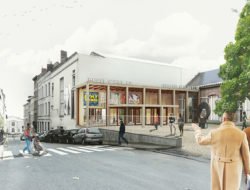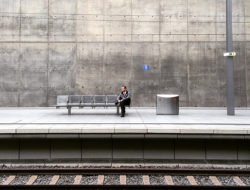Around the world, architects, urban planners and local authorities are starting to think about a ‘post-car’ world, a world without cars. To create tranquil city centres, where pedestrians take the lead role.
A permanent car-free day… This is not a conspiracy designed by a battalion of daily cyclists, but a research topic in more and more firms of architects, planning offices and municipal administrations. The Swiss National Science Foundation (FNS) has recently invested the equivalent of 1.5 million euros in the Post Car World Project, that will design tranquil city centres, where pedestrians and bikes take the lead and where the car would be a means of public transport. Same situation in Paris, where the Forum Vies Mobiles, a think tank funded by the SNCF, has launched “Post-Car Île-de-France”, a study for the Paris region without private cars.
At the origin of this work is one central finding: in most very large European cities, the use of the car is decreasing. In Paris, since 2000, there has been a decline in car use: currently, less than one in two households owns a car. The same goes for us, especially for the youngest generations, where the proportion of owners continues to decline, in particular under the impetus of the offers of free floating (self-service vehicles without fixed parking) and ever more restrictive environmental policies. Since the 1st of January, the Brussels Region is a low emission zone: the most polluting vehicles will progressively be banned from traffic.
Shared transport
This trend particularly interests public authorities but also, of course, the automotive industry. The American Ford Group anticipates a city of the future where the centre will only be accessible by public transport. With the generalisation of self-driving cars, the car will become a means of collective transport, and will no longer be meant for individual ownership. Accessible by subscription, in the same way as buses, metros and trams.
All stakeholders are in favour of tranquil city centres. In ten, twenty or thirty years’ time, city centres will be designed around pedestrians (larger sidewalks, secure intersections) and cyclists (traffic lights adapted to the speed of bikes, possibility of not marking stops) and around public transport. The Institut Momentum in Paris goes even further and imagines a city divided into neighbourhoods that provide their own energy and food, and which are connected by train and bicycle networks. “Within these neighbourhoods, we will move on foot, by bike, on micro-train lines or using shared motorised vehicles“, explains Agnès Sinaï, founder of the institute. Quite a challenge.
Tags: car-free, free floating, low-emission zone, Mobility, post car







































